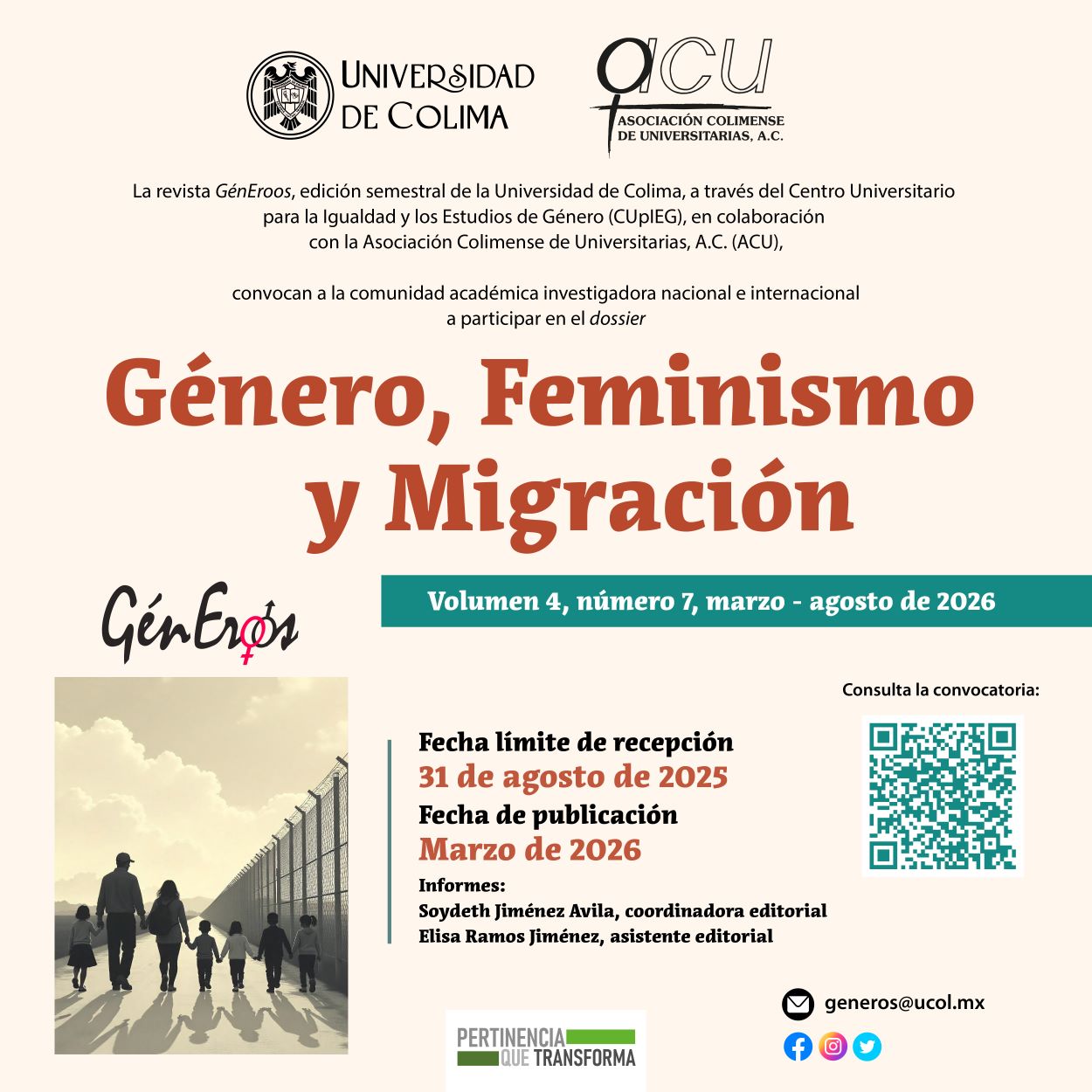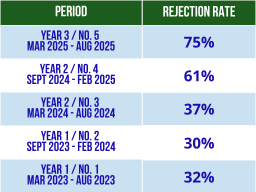COVID-19 in Mexico:
Intimate Partner Violence Associated with Sociodemographic Characteristics, Daily Functioning, and Mental Health
Keywords:
COVID-19, intimate partner violence, mental health, interpersonal relationships, gender differencesAbstract
The aim of this research is to evaluate the changes in daily functioning of those exposed to intimate partner violence (IPV) during the COVID-19 pandemic and associated lockdown. The database is part of a cross sectional PSY-Covid international study. Our study is focused on the information gathered in Mexico by researchers in 11 private and public universities. Participants were 7693 individuals,
aged 16 to 83, who completed an online questionnaire. Results show that being younger of age, identifying as non-binary or transgender, having low academic attainment, and low socioeconomic status, were associated with IPV during the lockdown. We used ANCOVA to compare those exposed to IPV during the lockdown and those not exposed in the full sample, and then conducted analyses by gender.
Although both groups reported negative changes in their work activity and economics during the pandemic, those exposed to IPV reported more negative impacts in income, work activities, partner and family relationships, and relationships with neighbors, as well as higher levels of depression, anxiety, and somatization symptoms. In terms of gender differences, women reported IPV was associated with more negative impacts in income, relationships with friends, and relationships with neighbors. Our findings are among the first to document the differential effects of the pandemic on those exposed to IPV and suggest negative impacts in a wide range of areas of daily functioning and mental health.
Downloads
Metrics
References
Ansara, D., y Hindin, M. (2010). Exploring gender differences in the patterns of intimate partner violence in Canada: A latent class approach. En: Journal of Epidemiology & Community Health, 64(10), pp. 849-854.
Arrieta, J.; Aguerrebere, M.; Raviola, G., et al. (2017). Validity and Utility of the Patient Health Questionnaire (PHQ)-2 and PHQ-9 for Screening and Diagnosis of Depression in Rural Chiapas, Mexico: A Cross-Sectional Study. En: PubMed, 73(9), pp.1-15.
Barrientos, J.; Rodríguez-Carballeira, Á.; Escartín, J., et al. (2016). Violencia en parejas del mismo sexo: Revisión y perspectivas actuales. En: Revista Argentina de Clínica Psicológica, XXV (3), pp. 289-298.
Béland, L.P.; Brodeur, A.; Haddad, J., et al. (2020). COVID-19, Family Stress and Domestic Violence: Remote Work, Isolation and Bargaining Power. En: IZA Discussion Papers.
Blanco, P.; Ruiz-Jarabo, C.; García de Vinuesa, L., et al. (2004). La violencia de pareja y la salud de las mujeres. En: Gaceta Sanitaria, 18(4), pp. 182-188.
Bonomi, A. E.; Thompson, R. S.; Anderson, M., et al. (2006). Intimate partner violence and women’s physical, mental, and social functioning. En: American Journal of Preventive Medicine, 30(6), pp. 458-466.
Bradley, N. L.; DiPasquale, A. M.; Dillabough, K., et al. (2020). Health care practitioners’ responsibility to address intimate partner violence related to the COVID-19 pandemic. En: CMAJ, 192(22), pp. E609-E610.
Buesa, S., y Calvete, E. (2013). Violencia contra la mujer y síntomas de depresión y estrés postraumático: el papel del apoyo social. En: International Journal of Psychology and Psychological Therapy, 13(1), pp. 31-45
Caldwell, J.; Swan, S.; y Woodbrown, V. (2012). Gender differences in intimate partner violence outcomes. En: Psychology of Violence, 2(1), pp. 42-57.
Casique, I., y Castro, R. (2019). Cambios y constantes en los niveles y factores asociados a las violencias de parejas en México. En: R. Castro (Coord.) De parejas, hogares, instituciones y espacios comunitarios. Violencias contra las mujeres en México (Endireh 2016), (pp. 161-270). México: Instituto Nacional de las Mujeres. Universidad Nacional Autónoma de México. Centro Regional de Investigaciones Multidisciplinarias.
Castro, R. (2019). Hacia una revisión de la Endireh y sus resultados. En R. Castro (Coord.) De parejas, hogares, instituciones y espacios comunitarios. Violencias contra las mujeres en México (Endireh 2016), (pp. 385-412). México: Instituto Nacional de las Mujeres. Universidad Nacional Autónoma de México. Centro Regional de Investigaciones Multidisciplinarias.
Coker, A. L.; Smith, P. H.; Thompson, M. P., et al. (2002). Social support protects against the negative effects of partner violence on mental health. En: Journal of Women’s Health & Gender-based Medicine, 11(5), pp. 465-476.
Cota, J. E. (2020). COVID-19 y el empleo en México: impacto inicial y pronósticos de corto plazo. En: Contaduría y Administración, 65(4), pp. 1-18.
Damonti, P., y Amigot, L. (2020). Las situaciones de exclusión social como factor de vulnerabilidad a la violencia de género en la pareja: Desigualdades estructurales y relaciones de poder de género Damonti, P., y Amigot, L. (2019). En: EMPIRIA. Revista de Metodología de Ciencias Sociales. 48, pp. 205-230.
Dim, E., y Elabor-Idemudia, P. (2018). Prevalence and predictors of psychological violence against male victims in intimate relationships in Canada. En: Journal of Aggression, Maltreatment & Trauma, 27(8), pp. 846-866.
Escribà-Agüir, V.; Ruiz-Pérez, I.; Montero-Piñar, M. I., et al. (2010). Partner violence and psychological well-being: buffer or indirect effect of social support. En: Psychosomatic Medicine, 72(4), pp. 383-389.
Federici, S. (2013). El feminismo y las políticas de lo común en una era de acumulación primitiva. Revolución en punto cero. Trabajo doméstico, reproducción y luchas feministas. España: Editorial Traficantes de sueños.
Gaitán-Rossi, P.; Pérez, V.; Vilar-Compte, M., et al. (en prensa). Monthly prevalence of generalized anxiety disorder during the COVID-19 pandemic in Mexico.
Gass, J.; Stein, D.; Williams, D., et al. (2011). Gender differences in risk for intimate partner violence among South African adults. En: Journal of Interpersonal Violence, 26(14), pp. 2764-2789.
González-Sanguino, C.; Ausín, B.; Castellanos, M., et al. (2020). Mental health consequences during the initial stage of the 2020 Coronavirus pandemic (COVID-19) in Spain. En: Brain, behavior, and immunity, 87, pp. 172-176.
Humphreys, J., y Lee, K. (2005). Sleep disturbance in battered women living in transitional housing. En: Issues in Mental Health Nursing 26(7), pp. 771-80.
Kniffin, K. M.; Narayanan, J.; Anseel, F., et al. (2020). COVID-19 and the workplace: Implications, issues, and insights for future research and action. En: American Psychologist, 76(1), pp. 63-77.
Kroenke, K.; Spitzer, R., y Williams, J. (2002). The PHQ-15: validity of a new measure for evaluating the severity of somatic symptoms. En: Psychosomatic medicine, 64(2), pp. 258-266.
Lara C. E.; Aranda, C.; Zapata, R., et al. (2019). Depresión y ansiedad en mujeres víctimas de violencia en la relación de pareja. En: Revista Argentina de Ciencias del Comportamiento, 11(1), pp. 1-8.
Lenguita, P. (2021). Luchas feministas, cuidados y comunidad en la postpandemia. En: Revista de Estudios Interdisciplinarios en Ciencias Sociales. 23 (1), pp. 141-149.
Löwe, B.; Wahl, I.; Rose, M., et al. (2010). A 4-item measure of depression and anxiety: validation and standardization of the Patient Health Questionnaire-4 (PHQ-4) in the general population. En: Journal of affective disorders, 122(1-2), pp. 86-95.
Moretti, A.; Menna, F.; Aulicino, M.; et al. (2020). Characterization of Home Working Population during COVID-19 Emergency: A Cross-Sectional Analysis. En: International Journal of Environmental Research and Public Health, 17(17), pp. 6264-6284.
Ocampo, L., y Amar, J. (2011). Violencia en la pareja, las caras del fenómeno. En: Salud Uninorte, 27 (1), pp. 108-123.
Peterson, C.; Liu, Y.; Kresnow, M., et al. (2018). Short-term Lost Productivity per Victim, puntos, comas: Intimate Partner Violence, Sexual Violence, or Stalking. En: Published by Elsevier Inc. on behalf of American Journal of Preventive Medicine. 55(1), pp. 106-110.
Prieto, M. (2014). Violencia de Pareja. Repercusiones en la Salud Mental de la Mujer. En: Revista Enfermería CyL. 6(2), pp. 93-97.
Rauer, A.; Kelly, R.; Buckhalt, J., et al. (2010). Sleeping with one eye open: marital abuse as an antecedent of poor sleep. En: Journal of Family Psychology, 24(6), pp. 667-677.
Rodríguez, L.; Carrera, M.; Lameiras, M., et al. (2015). Violencia en parejas transexuales, transgénero e intersexuales: una revisión bibliográfica. En: Saúde e Sociedade. 24(3), pp. 914-935.
Ruiz-Pérez, I.; Plazaola-Castaño, J., y del Río-Lozano, M. (2007). Physical health consequences of intimate partner violence in Spanish women. En: European Journal of Public Health, 17(5), pp. 437-443.
Sanz-Ruiz, A. (2020). Proyecto de Investigación PSY Covid, Universidad Autónoma de Barcelona.
Swanberg, J., y Logan, T. (2005). Domestic Violence and Employment: A Qualitative Study. En: Journal of Occupational Health Psychology, 10(1), pp. 3-17.
Texis, M. (2020). Mujeres en confinamiento: relatos de las violencias en México. El Cotidiano. En: Revista de la Realidad Mexicana, 222, pp. 83-95.
Wong, S. P., y Chang, J. C. (2016). Altered eating behaviors in female victims of intimate partner violence. En: Journal of Interpersonal Violence, 31(20), pp. 3490-3505.
Xiong, J. ; Lipsitz, O. ; Nasri, F., et al. (2020). Impact of COVID-19 pandemic on mental health in the general population: A systematic review. En: Journal of affective disorders. 277 (1), pp. 55-64.
Zijlema, W.; Stolk, R.; Löwe, B., et al. (2013). How to assess common somatic symptoms in large-scale studies: a systematic review of questionnaires. En: Journal of psychosomatic research, 74(6), pp. 459-468.
Sitios Web:
Adams, A., y Beeble, M. (2019). Intimate Partner Violence and Psychological Well-Being: Examining the Effect of Economic Abuse on Women’s Quality of Life. En: American Psychological Association. Consultado el 12 de enero de 2021. Disponible en http://dx.doi.org/10.1037/vio0000174.
Adams, A.; Tolman, R.; Bybee, D., et al. (2013). The Impact of Intimate Partner Violence on Low-Income Women’s Economic Well-Being: The Mediating Role of Job Stability. En: Violence Against Women. Consultado el 12 de febrero de 2021. Disponible en http://dx.doi.org/10.1177/1077801212474294.
Burgos, E. (2007). Identidades entrecruzadas. En: Thémata: Revista de filosofía. Consultado el 04 de enero de 2021. Disponible en http://institucional.us.es/revistas/themata/39/art31.pdf.
Castro, R.; Cerellino, L., y Rivera, R. (2017). Risk Factors of Violence against Women in Peru. En: Journal of Family Violence. Consultado el 28 de diciembre de 2020. Disponible en https://doi.org/10.1007/s10896-017-9929-0.
Castro, R., y Rivera, C. (2015). Mapa de la violencia contra la mujer: La importancia de la familia. En: Revista de investigación. Consultado el 17 de enero de 2021. Disponible en https://bit.ly/3dnfxHn.
Codagnone, C.; Bogliacino, F.; Gómez, C., et al. (2020). Assessing concerns for the economic consequence of the COVID-19 response and mental health problems associated with economic vulnerability and negative economic shock in Italy, Spain, and the United Kingdom. En: PLOS ONE. Consultado el 03 de febrero de 2021. Disponible en https://doi.org/10.1371/journal.pone.0240876.
Frías, S. (2017). Challenging the representation of intimate partner violence in Mexico: Unidirectional, mutual violence and the role of male control. En: Partner abuse. Consultado el 01 de febrero de 2021. Disponible en https://bit.ly/3e7qjCa
Giesbrecht, C. (2020). The Impact of Intimate Partner Violence in the Workplace: Results of a Saskatchewan Survey. En: Journal of Interpersonal Violence. Consultado el 13 de febrero de 2021. Disponible en https://bit.ly/3sTXs8A.
Instituto Nacional de Estadística, Geografía e Informática (2017). Encuesta Nacional sobre la Dinámica de las Relaciones en los Hogares. En: ENDIREH 2016. Consultado el 28 de diciembre de 2020. Disponible en https://bit.ly/2ZsSkvu.
Kofman, Y., y Garfin, D. (2020). Home is not always a haven: The domestic violence crisis amid the COVID-19 pandemic. En: Psychological Trauma: Theory, Research, Practice, and Policy. Consultado el 12 de enero de 2021. Disponible en https://doi.org/10.1037/tra0000866.
Montiel, E. (2021). México: Crecieron el 300 por cien durante la pandemia las llamadas de auxilio a refugios de mujeres. En: Amecopres. Consultado el 09 de febrero de 2021. Disponible en https://bit.ly/2M0wJY1.
Organización Mundial de la Salud. (2002). Informe mundial sobre la violencia y la salud (Sinopsis). En: Ginebra: OMS. Consultado el 10 de enero de 2021. Disponible en https://bit.ly/3auQWyJ.
Organización Mundial de la Salud. (2020). COVID-19 y violencia contra la mujer Lo que el sector y el sistema de salud pueden hacer. En: Organización Panamericana de la Salud, Organización Mundial de la Salud. Consultado el 23 de enero de 2021. Disponible en https://bit.ly/3kNi2o6.
Raj, A.; Johns, N.; Barker, K., et al. (2020). Time from COVID-19 shutdown, gender-based violence exposure, and mental health outcomes among a state representative sample of California residents. En: EClinicalMedicine. Consultado el 28 de diciembre de 2020. Disponible en: https://doi.org/10.1016/j.eclinm.2020.100520.
Roesch, E.; Amin, A.; Gupta, J., et al.(2020). Violence against women during COVID-19 pandemic restrictions. En: BMJ. Consultado el 10 de diciembre de 2021. Disponible en https://doi.org/10.1136/bmj.m1712.
Secretariado Ejecutivo del Sistema Nacional de Seguridad Pública (2020). Presuntos Delitos de Violencia Familiar: Tendencia Nacional, Información con corte al 31 de diciembre de 2020. Consultado el 15 de enero de 2021. Disponible en https://drive.google.com/file/d/1RHUjF-foAgeft_iaAGgXIiPvvgRfPT9b/view.
Silverio-Murillo, A.; Balmori de la Miyar, J., y Hoehn-Velasco, L. (2020). Families under Confinement: COVID-19, Domestic Violence, and Alcohol Consumption. En: Andrew Young School of Policy Studies Research Paper Series, Forthcoming. Consultado el 12 de enero de 2021. Disponible en http://dx.doi.org/10.2139/ssrn.3688384.
Walker, A.; Lyall, K.; Silva, D., et al. (2020). Male victims of female-perpetrated intimate partner violence, help-seeking, and reporting behaviors: A qualitative study. En: Psychology of Men & Masculinities. Consultado el 18 de enero de 2021. Disponible en https://doi.org/10.1037/men0000222.
World Health Organization (2005). WHO multi-country study on women’s health and domestic violence against women. En: REPORT -Initial results on prevalence, health outcomes and women’s responses. Consultado el 17 de enero de 2021. Disponible en https://www.who.int/reproductivehealth/publications/violence/24159358X/en/.
Downloads
Published
How to Cite
Issue
Section
License
Copyright (c) 2022 GénEroos. Número 30, año 28, septiembre 2021 – febrero 2022. Es una Publicación semestral coeditada por la Asociación Colimense de Universitarias A.C. y el Centro Universitario de Estudios de Género de la Universidad de Colima, Av. Universidad 333, Colonia Las Víboras, C.P. 28040, Teléfono 3123161146, https://portal.ucol.mx/cueg/revistageneros/, generos@ucol.mx. Directora editorial Ana Josefina Cuevas Hernández. Reserva de Derechos al Uso Exclusivo 04-2017-110112583300-203, otorgado por el Instituto Nacional del Derecho de Autor, ISSN electrónico en trámite. Responsable de la última actualización de este Número, Centro Universitario de Estudios de Género, Ana Gabriela Herrera Ramos, Av. Universidad 333, Colonia Las Víboras, C.P. 28040. Fecha de última modificación septiembre 11 de 2021.

This work is licensed under a Creative Commons Attribution-NonCommercial-ShareAlike 4.0 International License.
GénEroos Magazine allows you to share, copy and redistribute the material in any medium or format; adapt, remix, transform and build upon the material, crediting the work appropriately and providing a link to the licence, indicating if changes have been made.


















